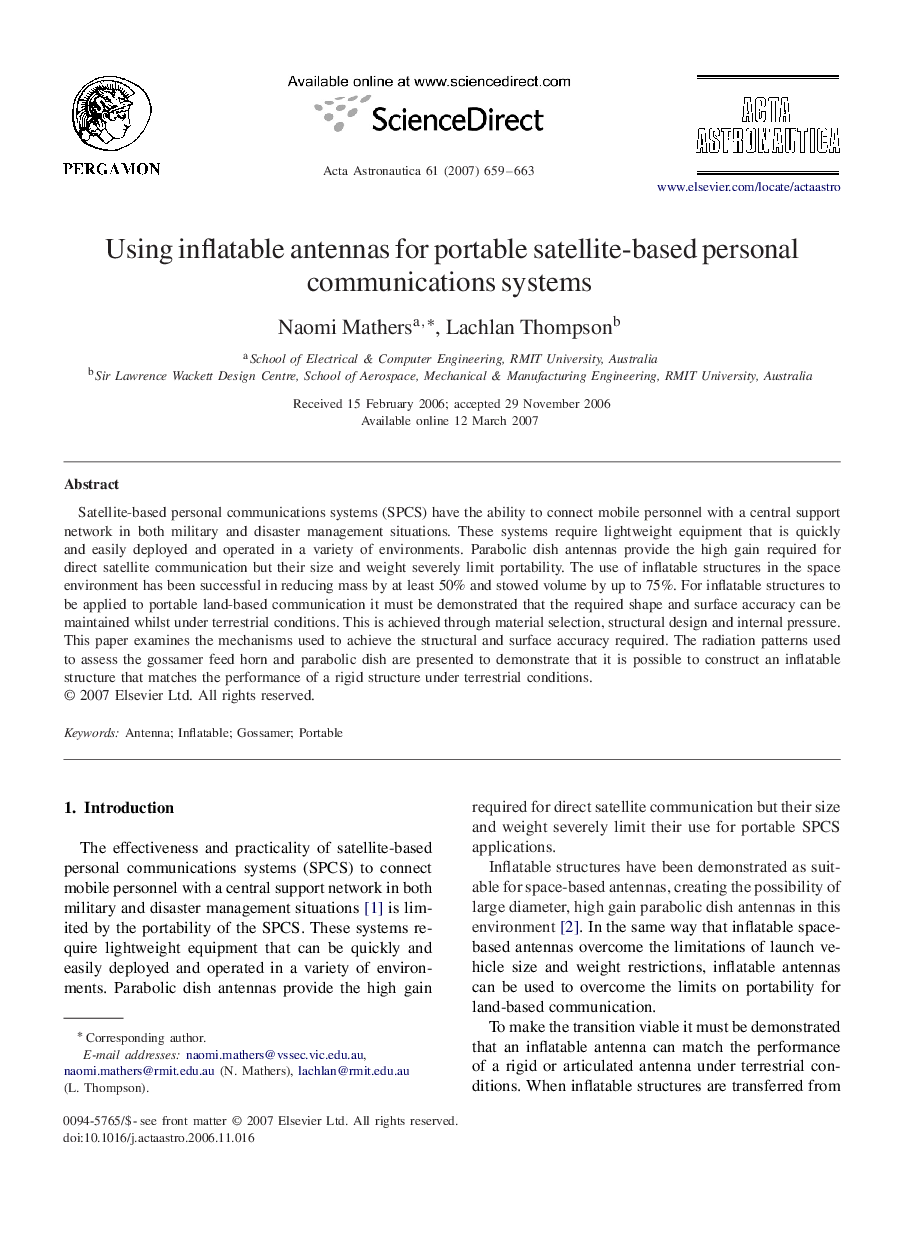| Article ID | Journal | Published Year | Pages | File Type |
|---|---|---|---|---|
| 1716988 | Acta Astronautica | 2007 | 5 Pages |
Satellite-based personal communications systems (SPCS) have the ability to connect mobile personnel with a central support network in both military and disaster management situations. These systems require lightweight equipment that is quickly and easily deployed and operated in a variety of environments. Parabolic dish antennas provide the high gain required for direct satellite communication but their size and weight severely limit portability. The use of inflatable structures in the space environment has been successful in reducing mass by at least 50% and stowed volume by up to 75%. For inflatable structures to be applied to portable land-based communication it must be demonstrated that the required shape and surface accuracy can be maintained whilst under terrestrial conditions. This is achieved through material selection, structural design and internal pressure. This paper examines the mechanisms used to achieve the structural and surface accuracy required. The radiation patterns used to assess the gossamer feed horn and parabolic dish are presented to demonstrate that it is possible to construct an inflatable structure that matches the performance of a rigid structure under terrestrial conditions.
